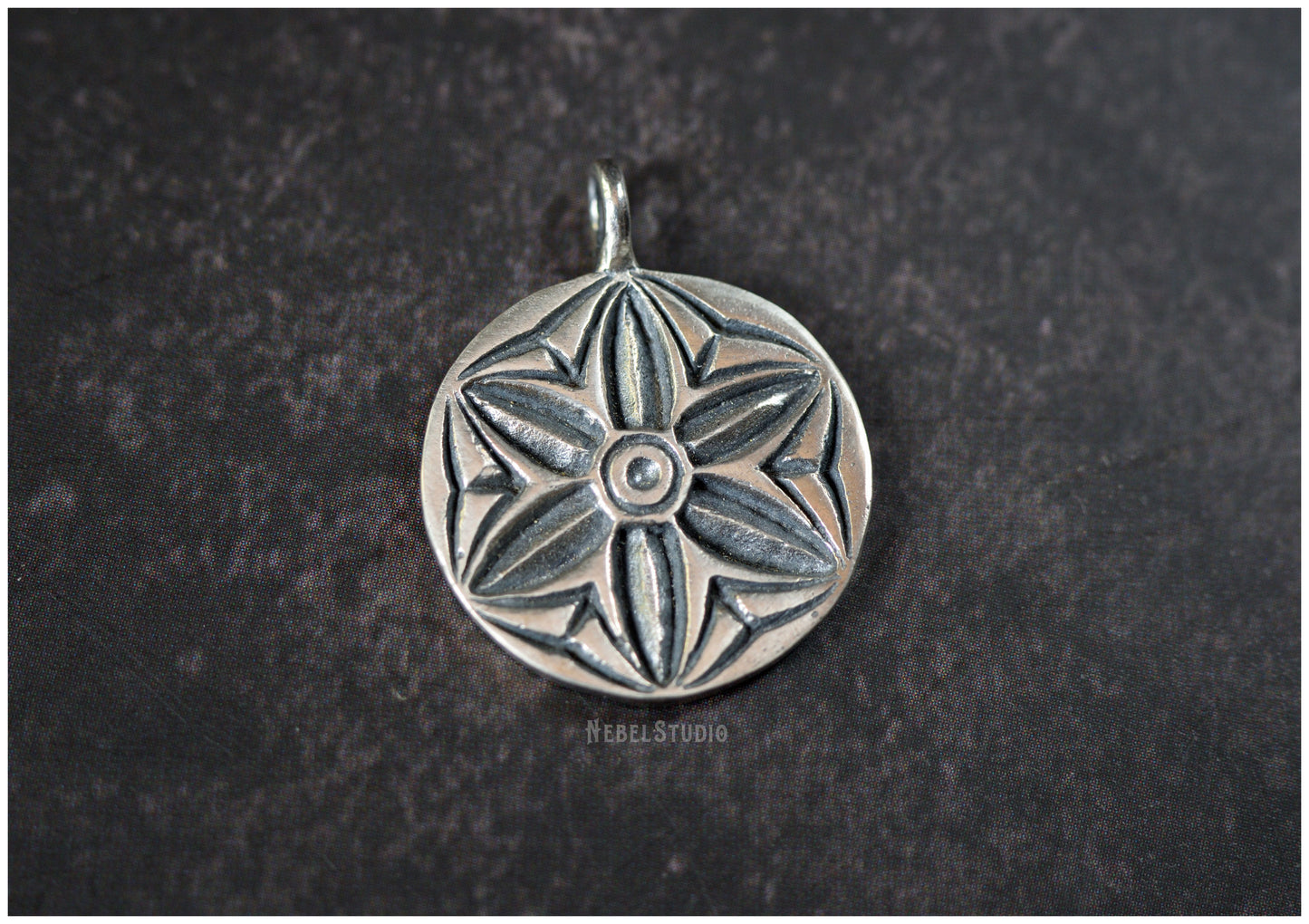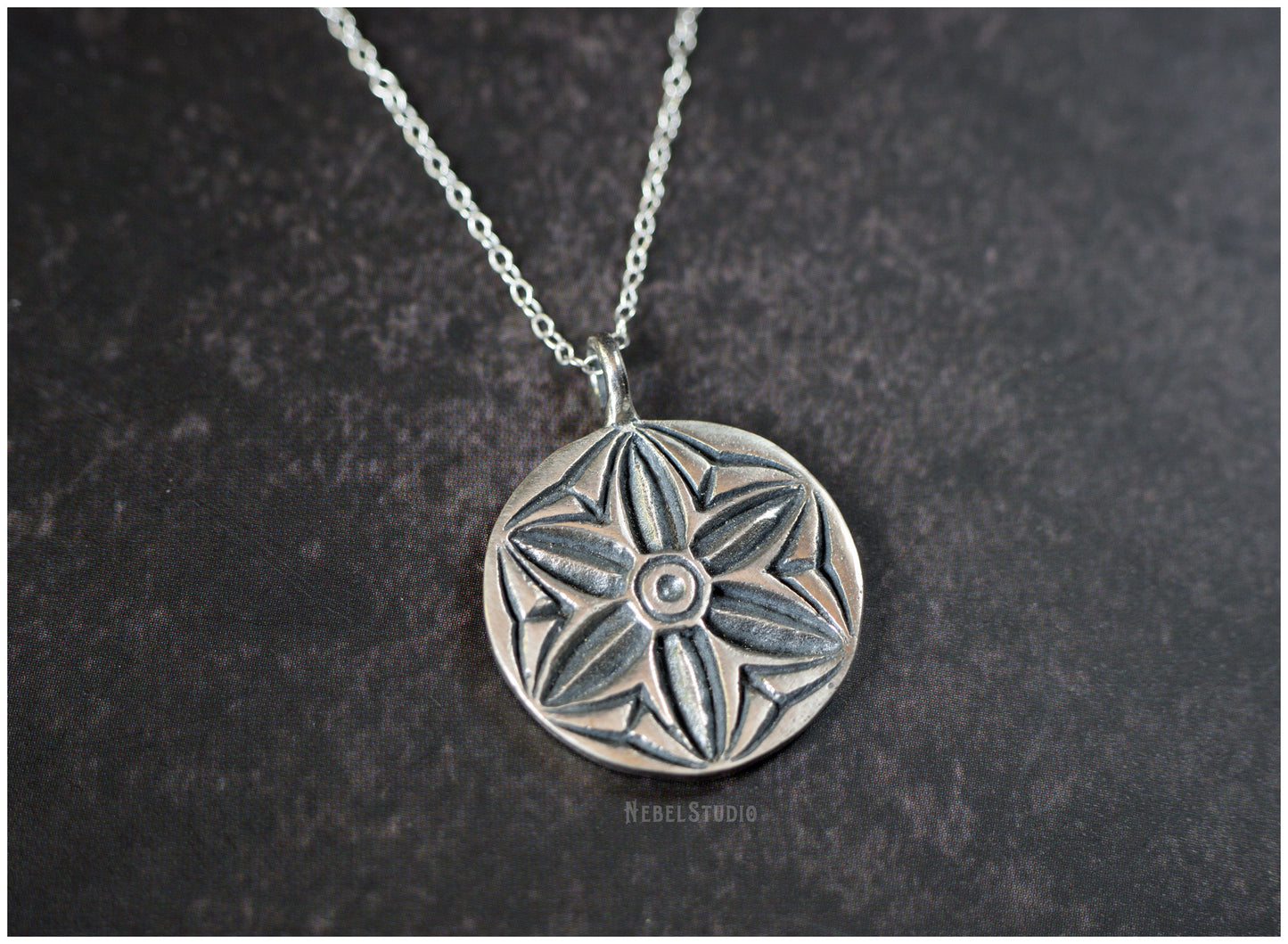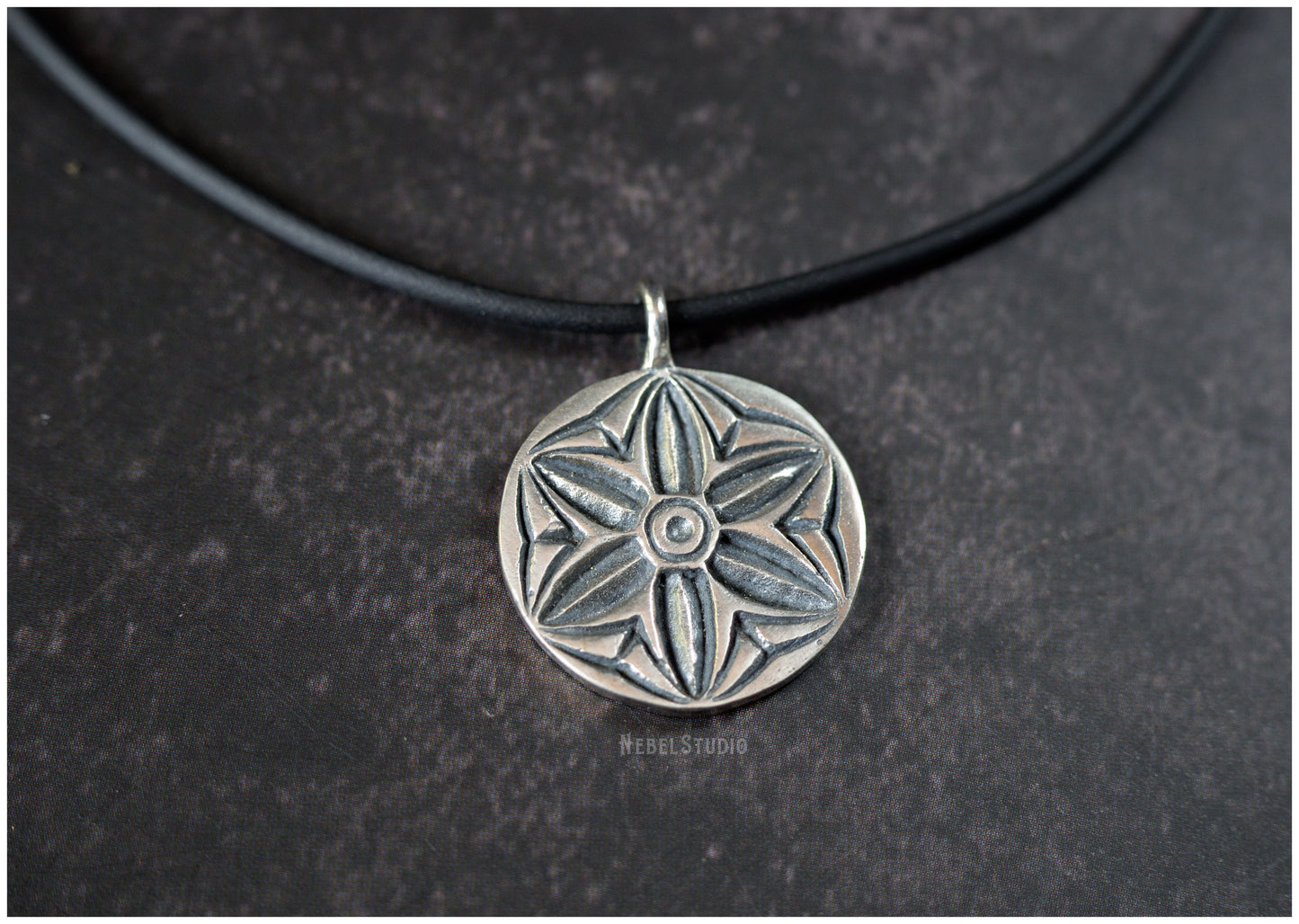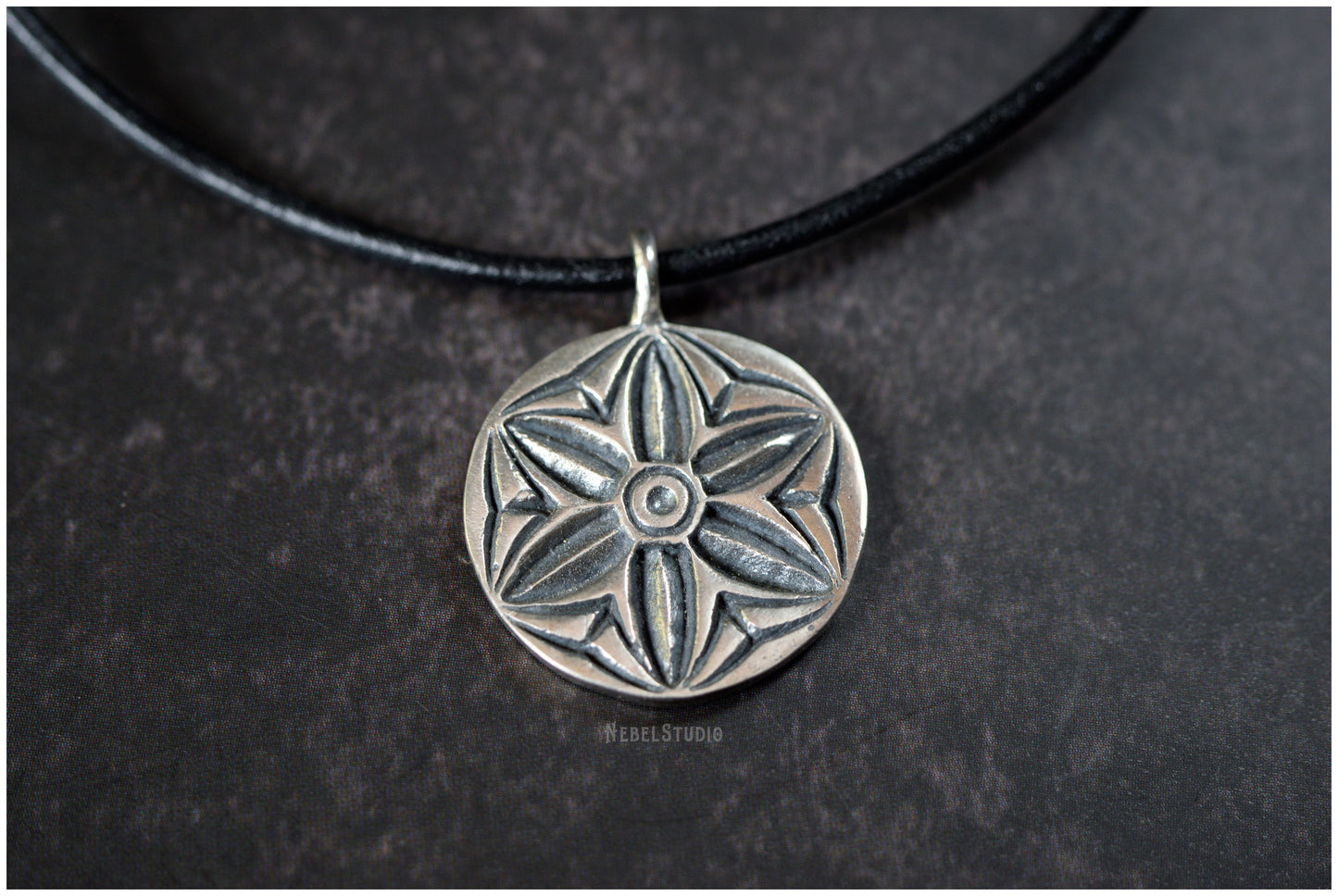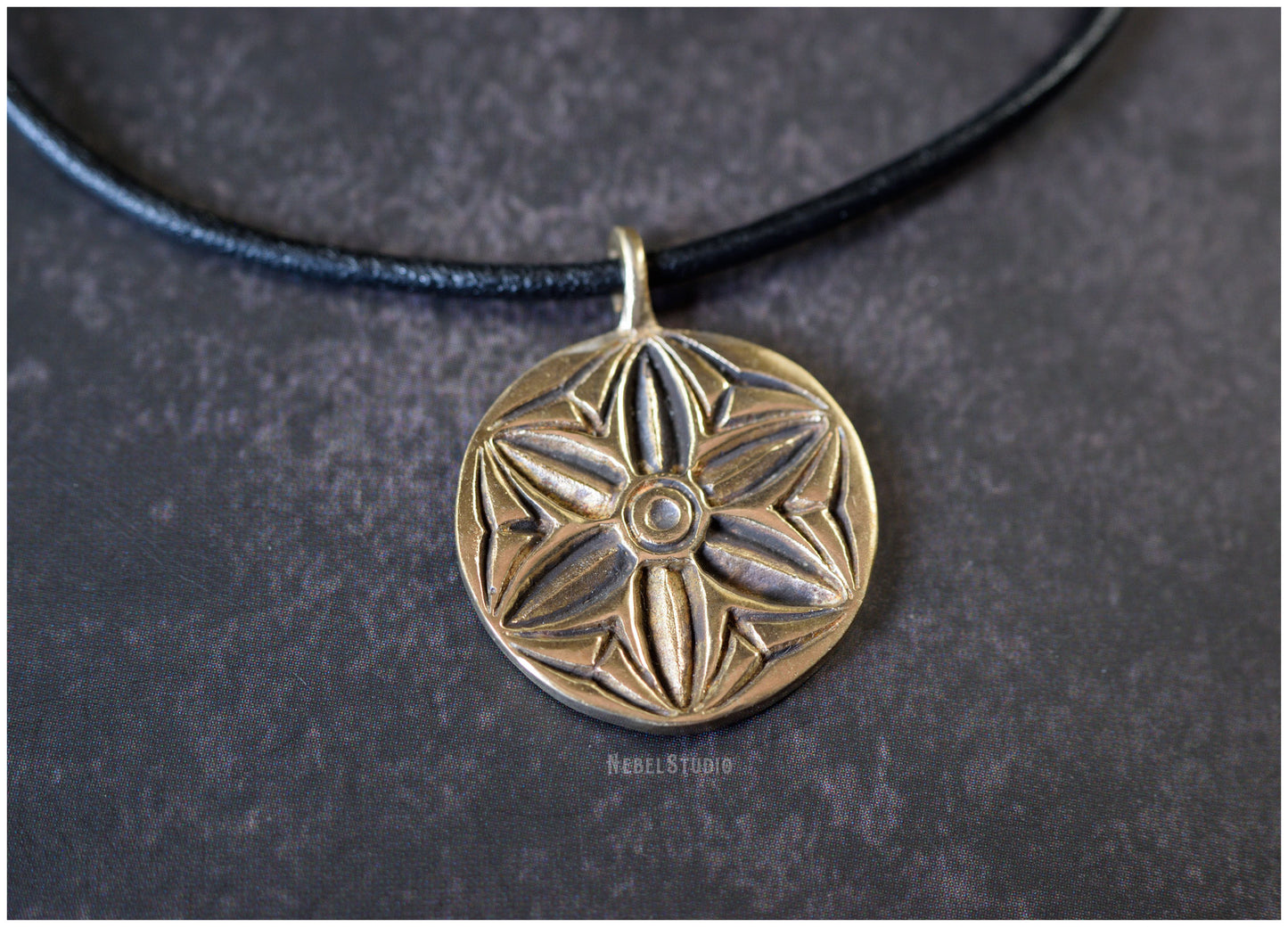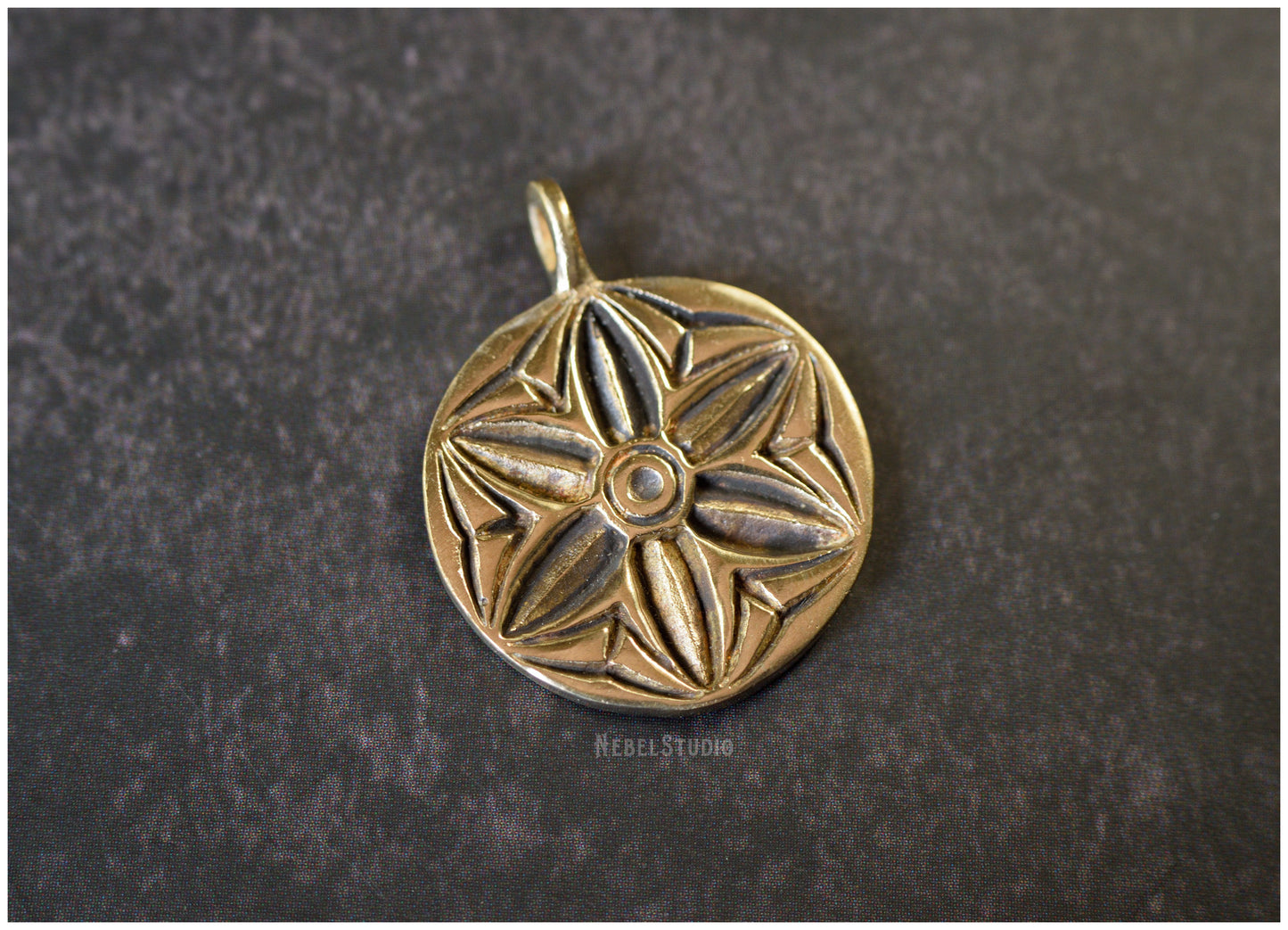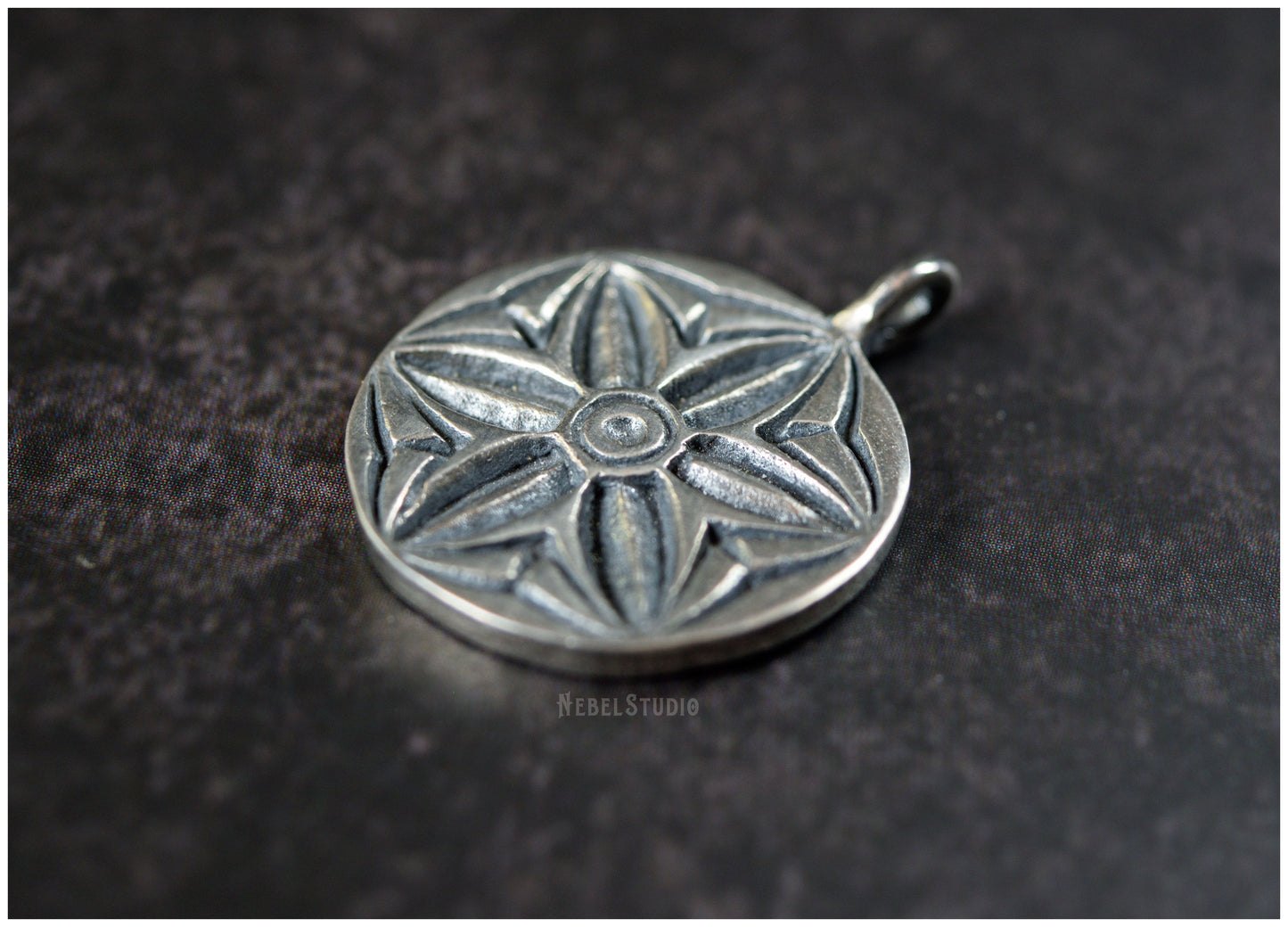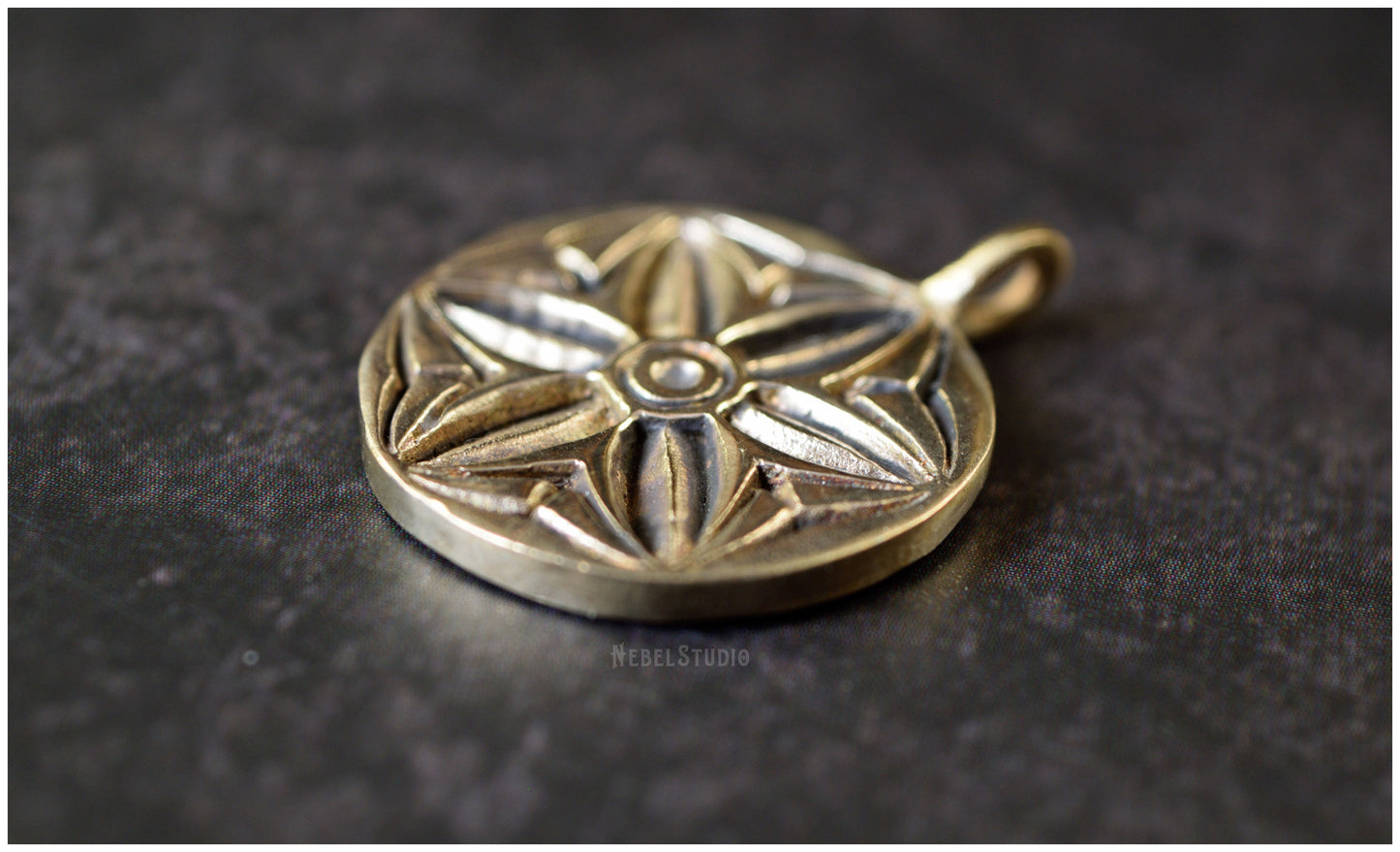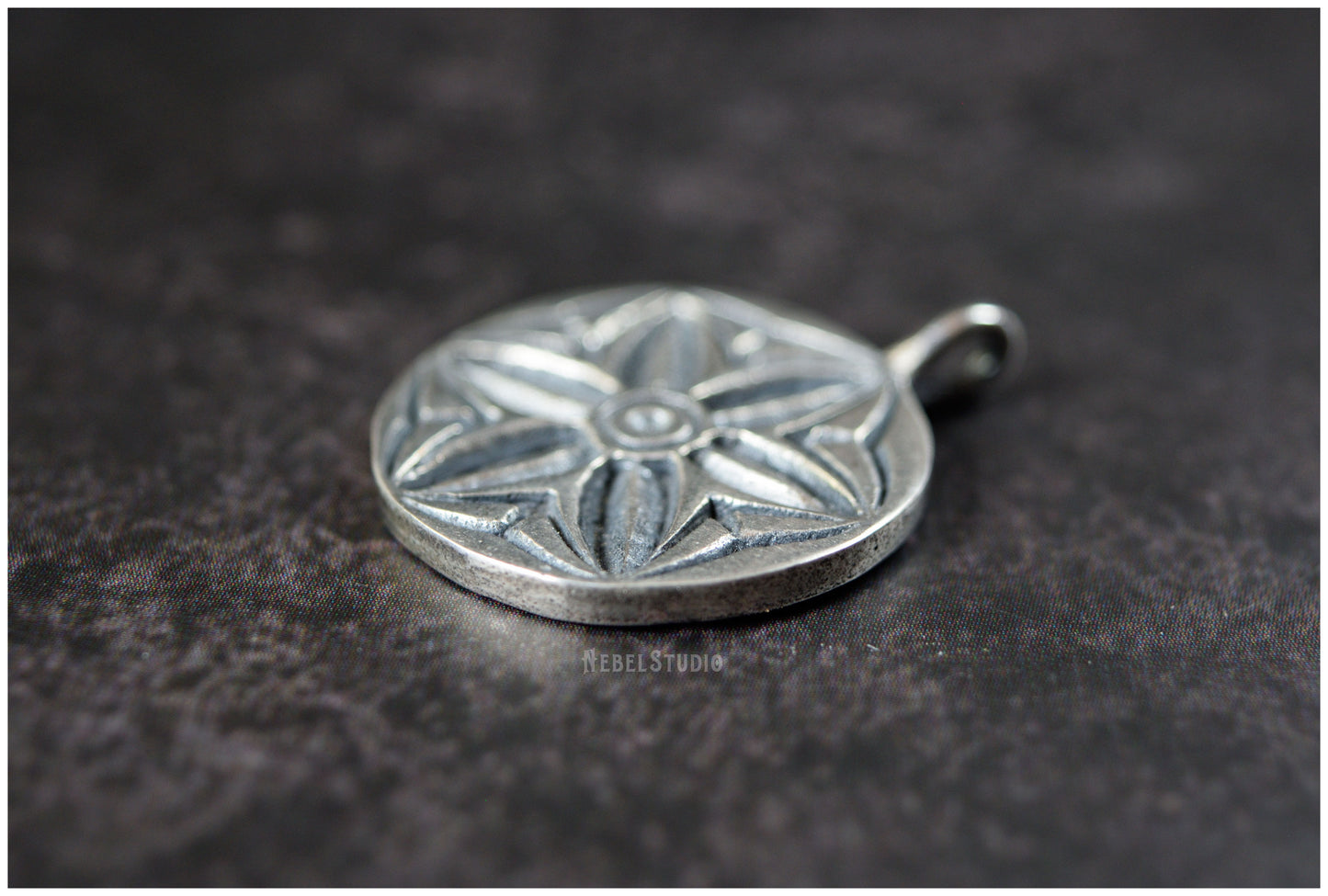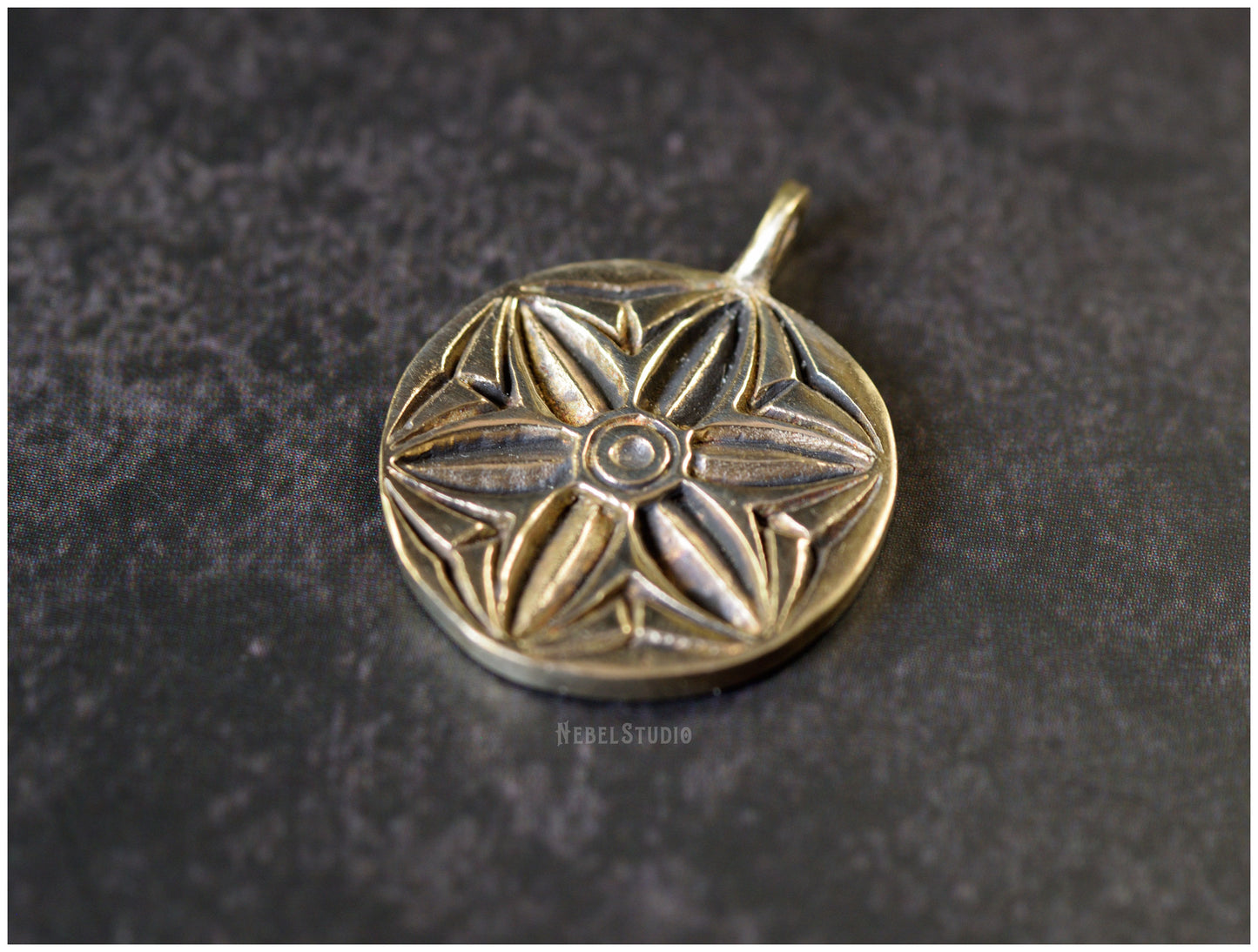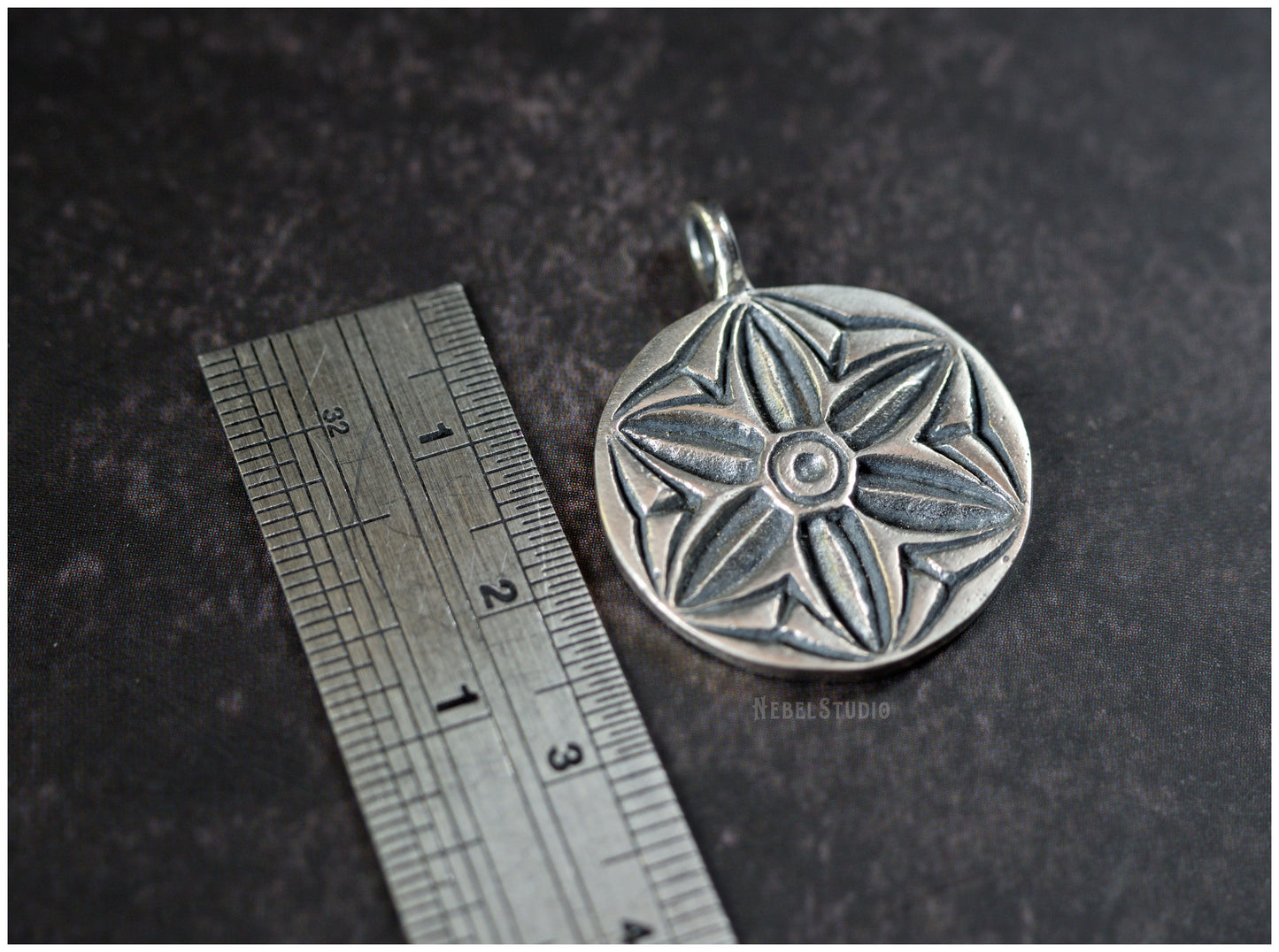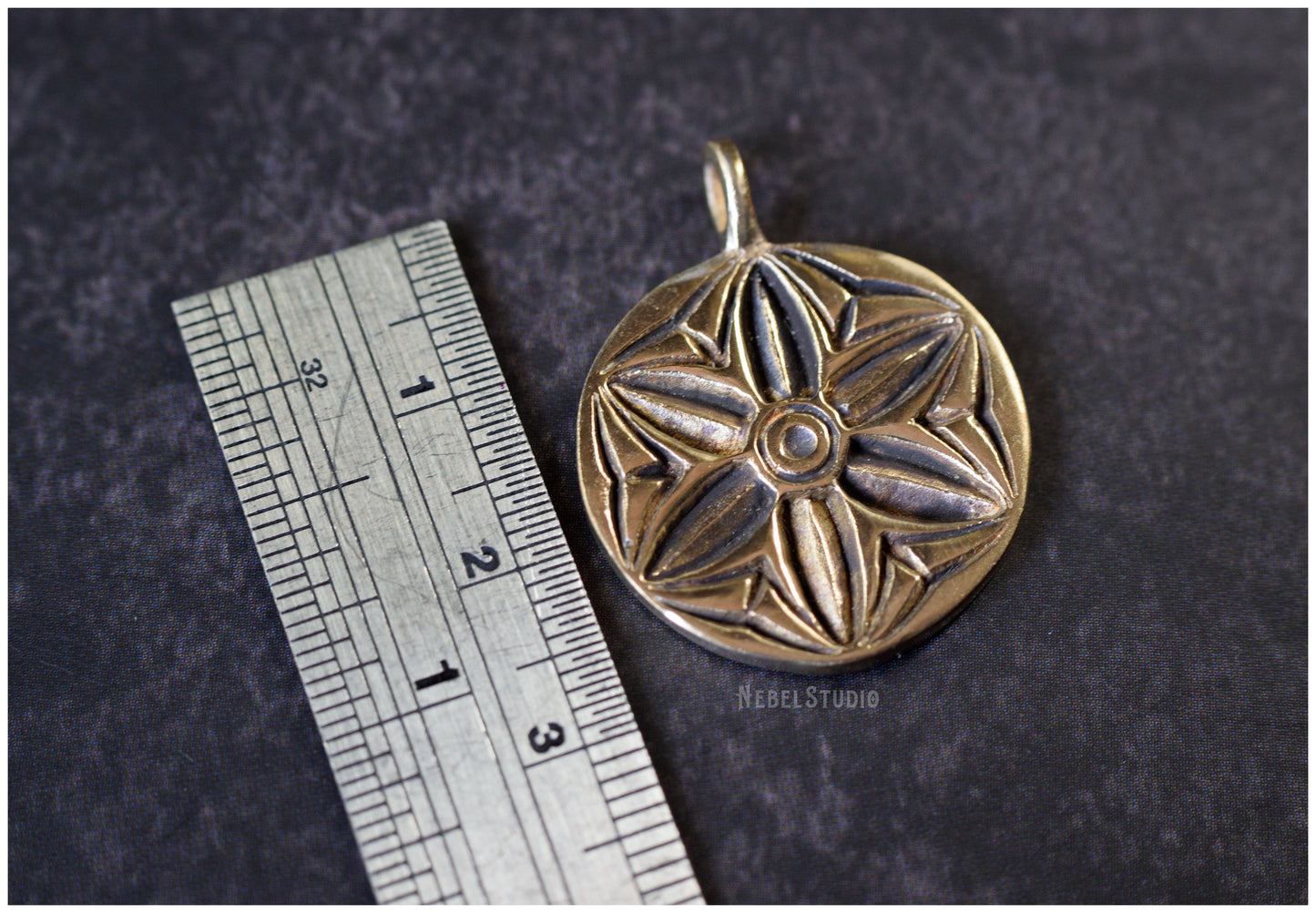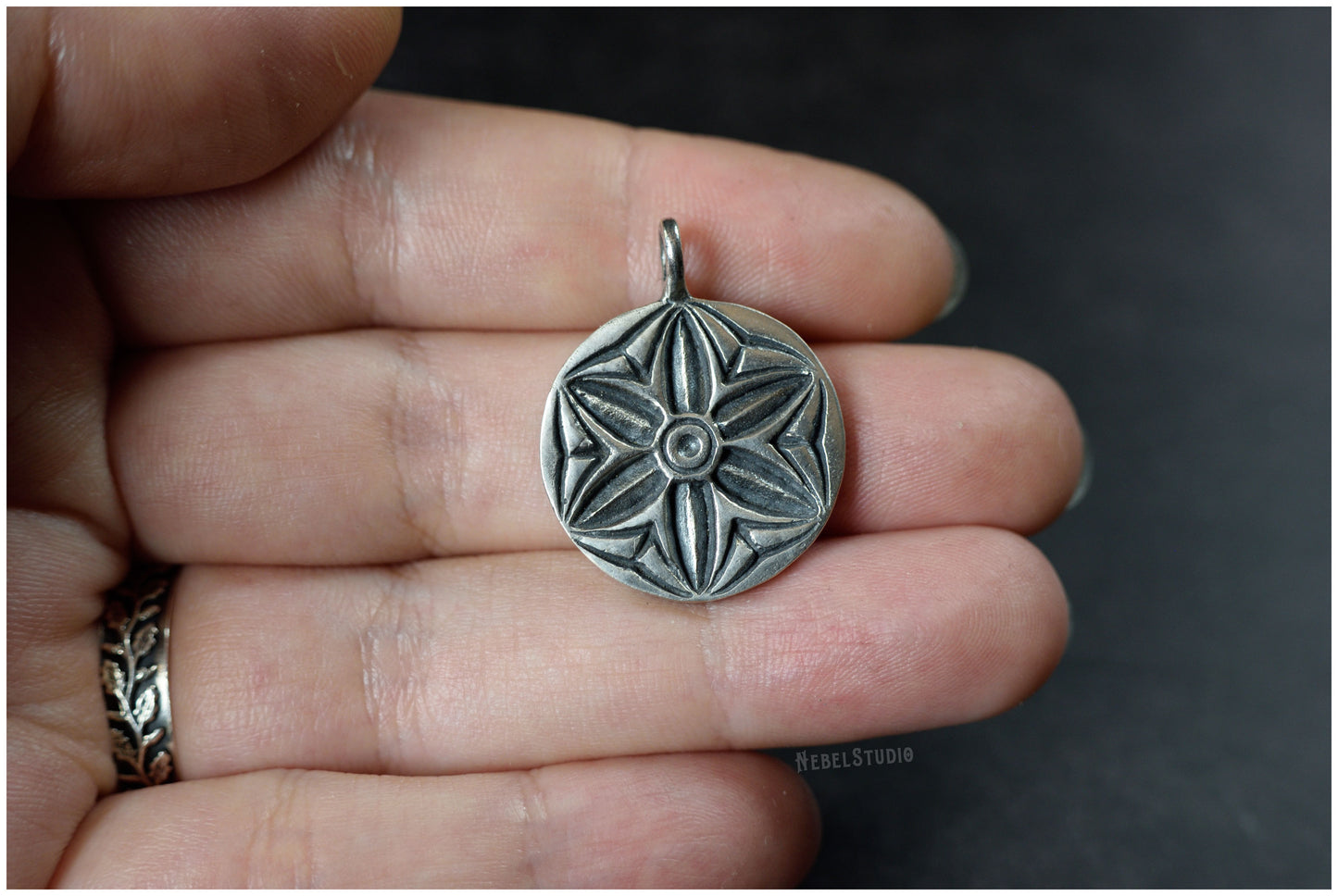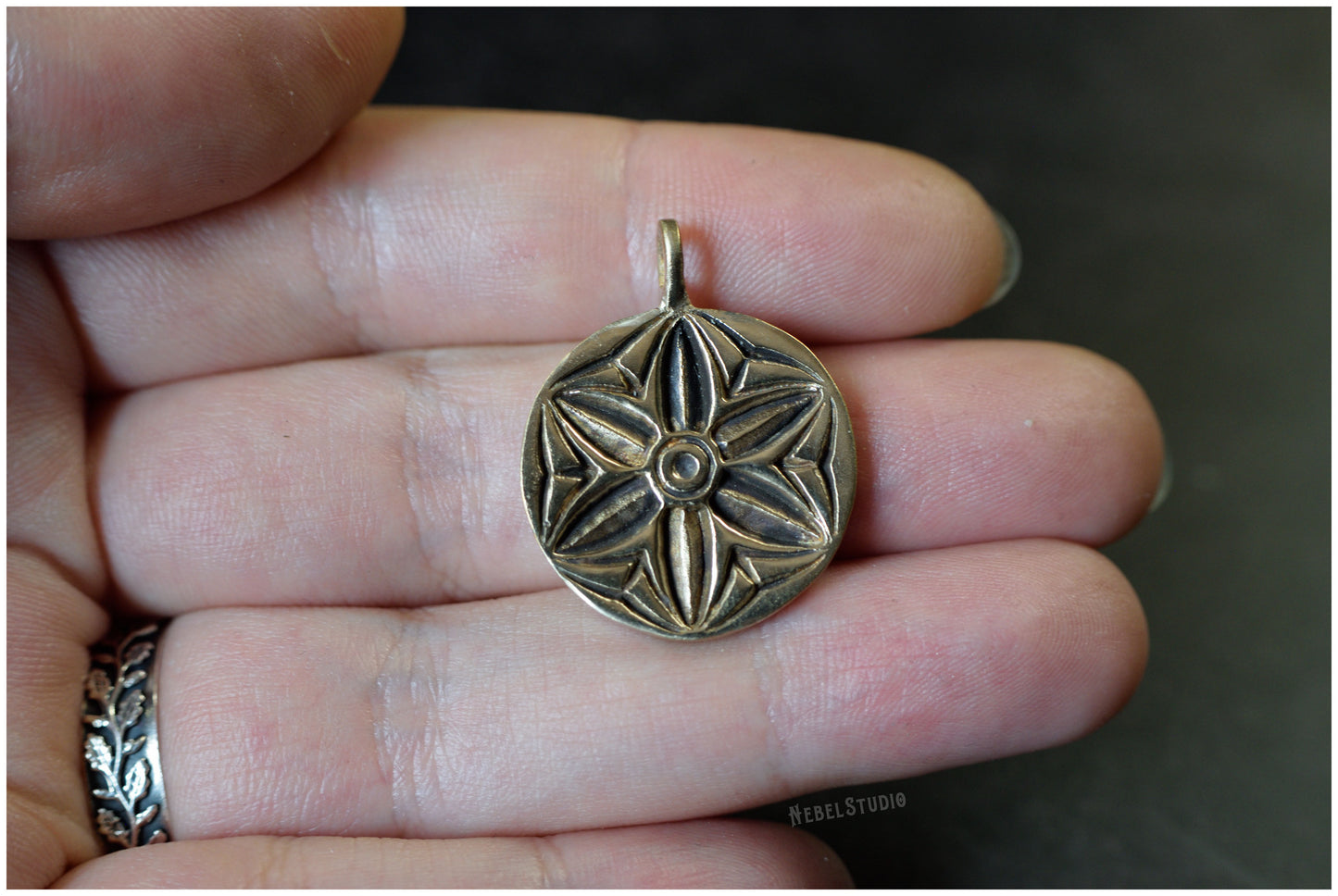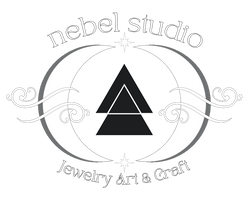Nebel Studio
Pendant Hexafoil silver or bronze Rose
Couldn't load pickup availability
925 sterling silver or bronze pendant with engraved hexafoil, six-petal flower, motif also known as "mark of witch "or" daisy wheel ".
It measures 2.5cm in diameter, counting the ring it measures 3cm high. You can get only the pendant or the pendant with a 50cm black leather cord and silver clasp. The silver version can also be purchased with a 50cm long 925 silver chain. The price varies depending on the option.
The pendants are hand carved by me and cast to metal using the lost wax process. All the finishes and patinas are also given to you by hand, piece by piece. They are made to order.
Hexapetal rosettes are symbols used for protective purposes against bad influences such as diseases, curses, evil eye, plagues, bad spirits, etc. In Europe it is considered that they have a Celtic origin as a solar symbol and we can find evidence of its use across the continent, both in household items and in ornaments of architectural elements, and even in funerary stelae. In Asturias they are known as 'galana flower', 'sestafueya', 'rosette' or 'star' in reference to the sun. In the south of the Alps they are called 'Sol ëd Alp' (Sun of the Alps) and in the British Isles and the United States 'hexafoils', 'daisy wheel' or 'witch marks'. They are mainly used to mark foods (such as cheese, bread or butter) or they are placed in strategic places in the houses such as doors, windows, chimneys or stairwells. These are considered weak points where evil can enter. The same is done with stables, barns, granaries, etc. This is how crops and livestock were protected from pests and diseases. In Anglo-Saxon culture it is said that the protective utility lies in its design. The interlocking pattern is believed to trap evil within them. The latter, upon entering, must follow the lines that, when intertwined, form an infinite figure from which he cannot escape. In places like Romania rosettes appear on votive crosses that, placed on the side of the roads, provided protection to travelers against "strigoaïca" or vampires. The sun is an element that damages these beings and, the origin as a solar representation of this symbol could explain its use. In Essaouira, Morocco, we also find rosettes as ornaments. In this case, when it is represented with the seven circles that form it complete, like a mandala, it is known as the "Seed of Life" or "Flower of Life" and is related to the feminine.
FOR MORE INFORMATION ON SHIPPING METHODS, PLEASE SEE THE TERMS OF SALE. If you have any questions, please contact me BEFORE placing the order. Thank you.
Please note that the colors of the images may vary slightly from the final pieces due to the light and the different configurations of the screens used to view them.
